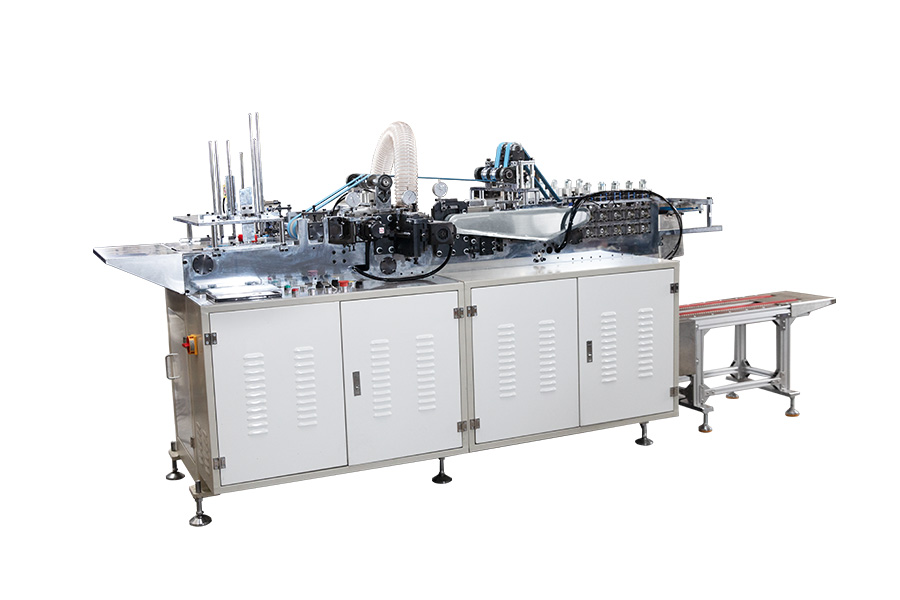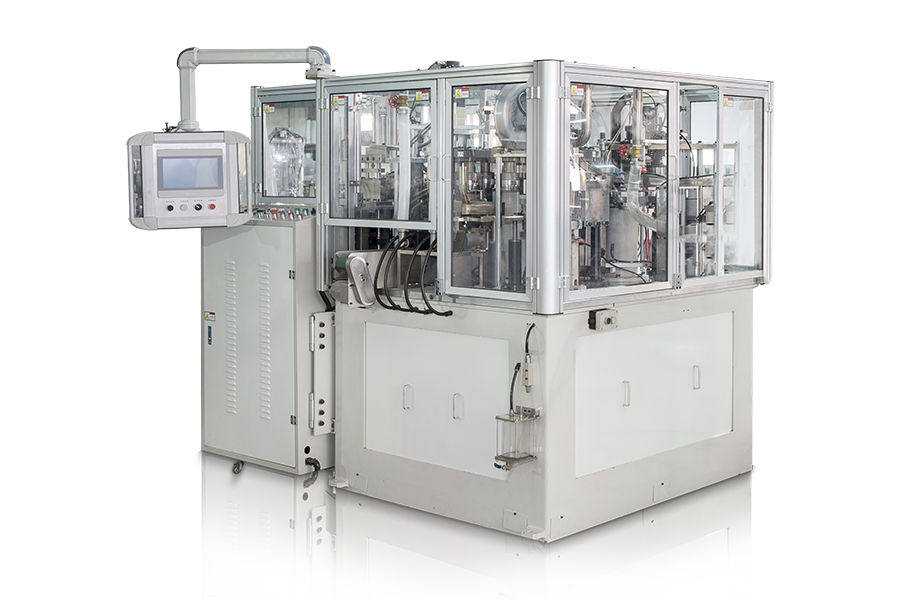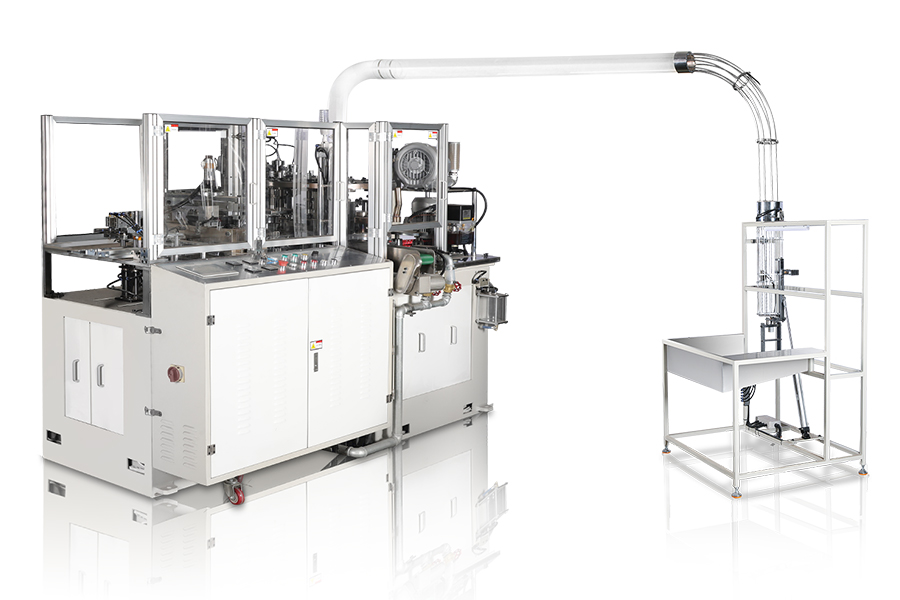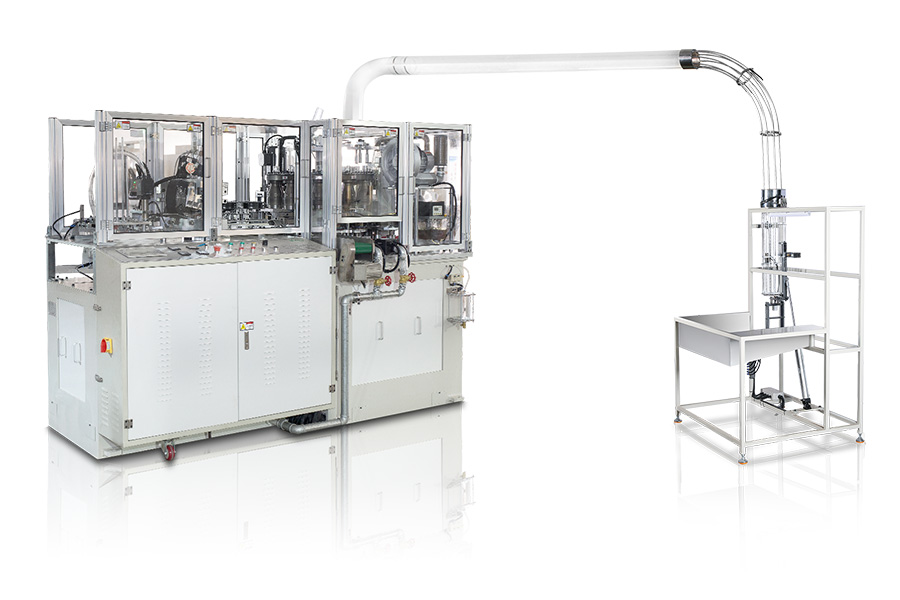Introduction: Why Every Growing Business Should Pay Attention to Disposable Cup Machines
In a world increasingly focused on convenience, hygiene, and sustainability, disposable cups are more than just foodservice accessories—they are a booming business. From morning coffee to takeout smoothies and event refreshments, single-use cups are everywhere. Behind their seamless availability lies the sophisticated machinery that powers their production: the disposable cup machine.
With governments enforcing stricter environmental regulations—especially across the EU and the Netherlands—businesses are turning to smarter, greener production solutions. Investing in a disposable cup machine is not just about manufacturing; it’s about future-proofing your business. As consumer demand for eco-friendly packaging surges and regulatory pressures mount, the ability to produce compliant, cost-effective disposable cups in-house or at scale could be the competitive edge your business needs.
Types of Disposable Cup Machines: Which One Is Right for You?
The selection of a disposable cup machine depends primarily on two factors: material (paper or plastic) and production scale. Each type is engineered to handle specific materials and output volumes, making it critical to align your choice with your business goals. Below is a detailed comparison:
Comparison Table: Paper vs Plastic Cup Machines
| Feature | Paper Cup Machines | Plastic Cup Machines |
|---|---|---|
| Materials Used | PE/PLA-coated paperboard | PP, PS, PET, PLA (in pellet or sheet form) |
| Eco-Friendliness | High (especially PLA or aqueous coating) | Lower (unless using PLA or compostable plastic) |
| Production Methods | Feeding, forming, sealing, curling | Thermoforming or Injection Molding |
| Ideal For | Coffee cups, soup bowls, cold drinks | Transparent cold cups, reusable thick cups |
| Printing Compatibility | Flexographic, digital, offset | Offset, digital |
| Typical Speed Range | 40–250 cups per minute | 20–80 cups per minute (depends on type) |
| Compliance (EU/Netherlands) | Easier to meet strict SUP regulations | Increasingly restricted |
The Cup Manufacturing Process: From Raw Material to Retail-Ready
The transformation of raw material into a fully-formed cup involves a series of precise, automated steps—each critical to ensuring quality, consistency, and compliance. Here’s a step-by-step breakdown:
1. Material Preparation
- Paper Cups: Food-grade PE (polyethylene) or PLA (polylactic acid)-coated paperboard is loaded into the machine. The material is cut into two key components: fan-shaped blanks (for the cup body) and circular discs (for the base). The coating ensures the cup is leakproof and heat-resistant—essential for hot beverages.
- Plastic Cups: Plastic pellets (e.g., PP, PET) are melted down and formed into sheets (for thermoforming) or injected directly into molds (for injection molding). PLA-based plastics, derived from renewable resources like cornstarch, are increasingly used to meet eco-standards.
2. Forming the Cup
- Paper Cups: The fan-shaped blank is rolled into a cylinder, and the overlapping edge is sealed using heat or ultrasonic technology to create a seamless side seam. A circular base is then attached and secured with pressure and heat (a process called knurling) to prevent leaks. Finally, the rim is curled outward to add rigidity and a smooth drinking surface.
- Plastic Cups: For thermoforming, plastic sheets are heated until pliable, then stretched over a mold and shaped using vacuum pressure. For injection molding, molten plastic is injected into cup-shaped molds, cooled, and ejected. Both methods produce sturdy, transparent cups ideal for cold drinks.
3. Printing & Branding
Customization is a key revenue driver in the disposable cup market. Flexographic printing (for large batches) and digital printing (for small runs) allow businesses to add logos, promotional messages, or vibrant designs directly onto cups. This turns a simple cup into a marketing tool—especially valuable for cafes, quick-service restaurants (QSRs), and event organizers looking to boost brand visibility.
4. Quality Control
Modern disposable cup machines integrate advanced quality checks to ensure consistency:
- Leakage tests: Cups are filled with water to detect weak seams.
- Dimensional checks: Sensors verify cup height, diameter, and rim smoothness.
- Vision systems: Cameras inspect prints for smudges or misalignment.
These steps reduce waste and ensure compliance with food safety standards (e.g., FDA, EU 10/2011).
5. Packaging
Finished cups are stacked automatically (typically 50–100 per stack) and wrapped in plastic sleeves or boxed for shipping. High-speed machines often include automated packaging lines, minimizing manual labor and reducing the risk of contamination.
Key Components of a Disposable Cup Machine
Understanding the core components of a disposable cup machine helps businesses evaluate durability, maintenance needs, and performance. Here are the critical parts:
- Feeding Unit: Controls the flow of raw materials (paper blanks or plastic sheets) into the machine, ensuring precise alignment to avoid jams.
- Heating/Sealing System: For paper cups, this uses heat or ultrasonic vibrations to seal seams. For plastic cups, it regulates temperatures for thermoforming or injection molding.
- Forming Tools: Custom molds (cylinder shapes for paper, cup-shaped for plastic) determine the cup’s size and design. Quick-change molds allow flexibility in production.
- Cutting Station: Trims excess material from cup edges, ensuring a clean, uniform finish.
- PLC Control Panel: A digital interface that monitors speed, temperature, and production counts. Operators can adjust settings in real time to optimize output.
- Printing Unit (Optional): Integrates with the forming process to apply designs, eliminating the need for separate printing equipment.
- Collection & Stacking Unit: Gathers finished cups, stacks them, and prepares them for packaging—reducing manual handling.
Which Machine Should You Buy? Factors to Consider
Choosing the right disposable cup machine requires balancing your business size, production goals, and budget. Use this decision matrix to guide your choice:
Decision Matrix: Matching Machine Features with Business Needs
| Business Size | Recommended Machine Type | Speed Range | Automation Level |
|---|---|---|---|
| Startup | Low-speed Paper Cup Machine | 40–80 cups/min | Semi-automatic or manual |
| Growing SME | Medium-speed Paper/Plastic Machine | 80–150 cups/min | Semi to fully automatic |
| Large Manufacturer | High-speed Fully Automatic Machine | 150–250+ cups/min | Full automation |
Key Considerations Beyond Size:
- Material Compatibility: If sustainability is a priority, choose a machine that handles PLA-coated paper or compostable plastics. For cost-sensitive markets, PE-coated paper or standard PP may suffice.
- Cup Size Flexibility: Look for machines with interchangeable molds to produce multiple sizes (e.g., 8oz, 12oz, 16oz). This is critical for serving diverse clients (cafes, stadiums, airlines).
- Footprint & Space: High-speed machines require more floor space (up to 50 sq.m) for the main unit and auxiliary equipment (e.g., packaging lines). Ensure your facility can accommodate this.
- Energy Efficiency: Modern machines with variable-speed motors and heat recovery systems reduce electricity costs—especially important for high-volume production.
- Manufacturer Support: Opt for brands with a local service network. Downtime due to broken parts can cost thousands in lost revenue. Reputable manufacturers (e.g., Jochamp, Well Machinery) offer warranties and 24/7 technical support.
Business Opportunities: Disposable Cups as a Growth Strategy
The disposable cup machine opens doors to multiple revenue streams, making it a versatile investment. Here are four business models to consider:
1. In-House Production for Existing Businesses
Cafes, QSRs, or catering companies can reduce costs by producing cups in-house instead of outsourcing. For example, a busy cafe using 10,000 cups monthly could save 30–40% on supply costs by eliminating distributor markups.
2. Custom Printing Services
Branded cups are in high demand for events, corporate promotions, and local businesses. Investing in a machine with in-line printing allows you to offer “print-on-demand” services, charging premium rates for customized designs.
3. Wholesale Distribution
Produce generic or branded cups in bulk and supply them to supermarkets, hotels, or airlines. This model thrives on volume—high-speed machines (200+ cups/min) ensure you can meet large orders and negotiate favorable contracts.
4. Eco-Friendly Niche Production
With EU regulations cracking down on single-use plastics, there’s growing demand for PLA-coated paper cups or cups made from bagasse (sugarcane fiber). Specializing in these materials can position your business as a sustainability leader, attracting eco-conscious clients.
Regulatory Trends and Dutch Market Insights
For businesses operating in the Netherlands or exporting to the EU, understanding local regulations is critical to avoiding fines and ensuring market access. Here’s what you need to know:
- Plastic Bans: As of January 2024, the EU prohibits single-use plastic cups for on-site consumption. By 2026, even cups with <5% plastic (e.g., PE-coated paper) will be restricted for on-site use.
- Material Preferences: PLA-coated paper and aqueous-coated paper (plastic-free) are now the gold standard, as they meet recyclability and compostability requirements.
- Surcharges: Takeaway plastic cups face a surcharge (e.g., €0.25 per cup in the Netherlands) to discourage use—driving demand for paper alternatives.
- EPR Obligations: Under Extended Producer Responsibility (EPR) rules, all cup producers must register with Dutch authority Verpact, fund recycling infrastructure, and report on waste reduction efforts.
These trends make paper cup machines—especially those handling plastic-free materials—the most future-proof investment in the Dutch market.
Innovation Spotlight: Where Is the Industry Heading?
The disposable cup machine sector is evolving rapidly, driven by sustainability and Industry 4.0. Here are the key innovations shaping the future:
1. Smart Manufacturing (Industry 4.0)
- AI Monitoring: Sensors track machine performance, predicting breakdowns before they occur (e.g., detecting worn seals or misaligned molds).
- Real-Time Data: PLC panels integrate with cloud software, allowing managers to monitor production remotely and adjust settings for optimal efficiency.
- Predictive Maintenance: Algorithms analyze usage patterns to schedule maintenance, reducing unplanned downtime by up to 30%.
2. Eco-Material Compatibility
Modern machines now handle a range of sustainable materials:
- PLA-Coated Paper: Biodegradable and compliant with EU SUP regulations.
- Bagasse: Fiber from sugarcane waste, used for sturdy soup cups.
- Aqueous Coatings: Water-based, plastic-free barriers for cold drinks.
3. Energy & Noise Reduction
- Low-Heat Sealing: Ultrasonic technology uses 50% less energy than traditional heat sealing.
- Soundproofing: Enclosures reduce noise levels, improving workplace safety and operator comfort.
4. Flexible Production
- Quick-Change Molds: Switch between cup sizes in 10 minutes or less, ideal for small-batch orders.
- Modular Design: Add printing or packaging units as your business grows, avoiding the need to replace the entire machine.
Conclusion: Is a Disposable Cup Machine Your Next Strategic Investment?
The disposable cup machine is more than a piece of equipment—it’s a gateway to scalability, compliance, and profitability. As the world shifts toward eco-friendly packaging, businesses that can produce high-quality, regulated cups efficiently will dominate the market.
For startups, a small paper cup machine offers a low-cost entry into the foodservice supply chain. For growing SMEs, upgrading to a medium-speed machine with printing capabilities can unlock new revenue streams. For large manufacturers, high-speed, smart machines ensure you meet bulk orders while adhering to strict EU regulations.
In the Netherlands and across the EU, where sustainability laws are among the strictest, investing in a paper cup machine—especially one compatible with plastic-free materials—is not just a choice, but a necessity. By aligning your business with these trends, you’ll position yourself as a leader in the evolving disposable cup industry.
Ready to take the leap? Evaluate your production needs, research reputable manufacturers, and calculate your ROI. The right disposable cup machine could be the game-changer your business has been missing.






 English
English عربى
عربى 中文简体
中文简体

















